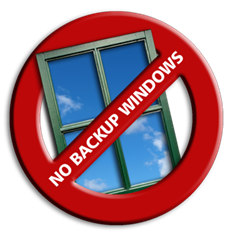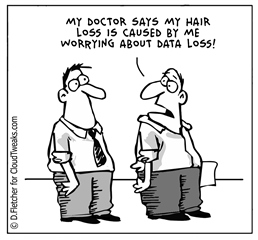
Having worked in a Data Center, I’m familiar with the challenges IT Admins face on the daily. From security, networking, to data management and everything in between, it seems there just isn’t enough time in the day to get done what needs to...well get done. Here at Quest YOUR time is what we care about and why we do what we do.
Most IT shops (if not all of them) have a list of tasks that need done at the beginning of a shift. One of those items on your list would most likely be to check the backup jobs that ran the night before. If there were jobs that ended in error you’d then have to spend valuable time troubleshooting those errors. There are many reasons why backups fail and some issues can be easily resolved. However issues involving “backup-windows” aren’t so easy to resolve.
If you have backup jobs that are set to run within a given time window, say during off hours. Then you may run into a situation where not all backup jobs complete. That’s because the number of jobs and amount of data scheduled can’t complete within the given time frame. If you’re writing to tape for instance...this can be a regular occurrence due to performance limitations. When this happens you start to get a back log. Missing a backup-window has a cascading effect. Simply put; if the first backup job doesn’t complete within its allotted time, then the subsequent jobs will also fail. One thing to keep in mind is that when a backup fails and you have to wait 12 to 24 hours before trying the job again…that exposes the company to data loss that could potentially be catastrophic and cost you not only time but money.

So we at Quest want to be able to help ELIMINATE backup-windows once and for all! With Rapid Recovery you’ll never miss, missing backup-windows again!
Rapid Recovery uses snapshot technology that leverages Microsoft’s Volume Shadow Copy Service. How does this eliminate backup-windows? First a “base image” is captured of the entire system and its protected volumes which happens at the block level. You could call this a “full-backup” for simplicities sake. Then based on an hourly snapshot schedule (snapshot intervals are fully adjustable), incremental snapshots are taking…forever. An incremental snapshot consist of changes at the block level since the last snapshot was taken. With Rapid Recovery’s built in deduplication only the unique blocks are written to the repository. The advantages this methodology offers are several. Here are a couple: First you avoid having to schedule backups around production hours. Rapid Recovery can safely protect mission critical servers during business hours with zero impact to production. Second, the window for potential data loss is greatly reduced. For instance…taking hourly snapshots mean that your last point in time backup would be at most one hour old. If you’re running a traditional backup scheme, where you do one full per week and then differentials or incrementals daily…your backup data could be as much as 24 hours old.
Rapid Recovery can help you eliminate backup windows and so much more. Quest offers trials of all our software products and to get started with Rapid Recovery simply follow this link: https://www.quest.com/register/94236/


